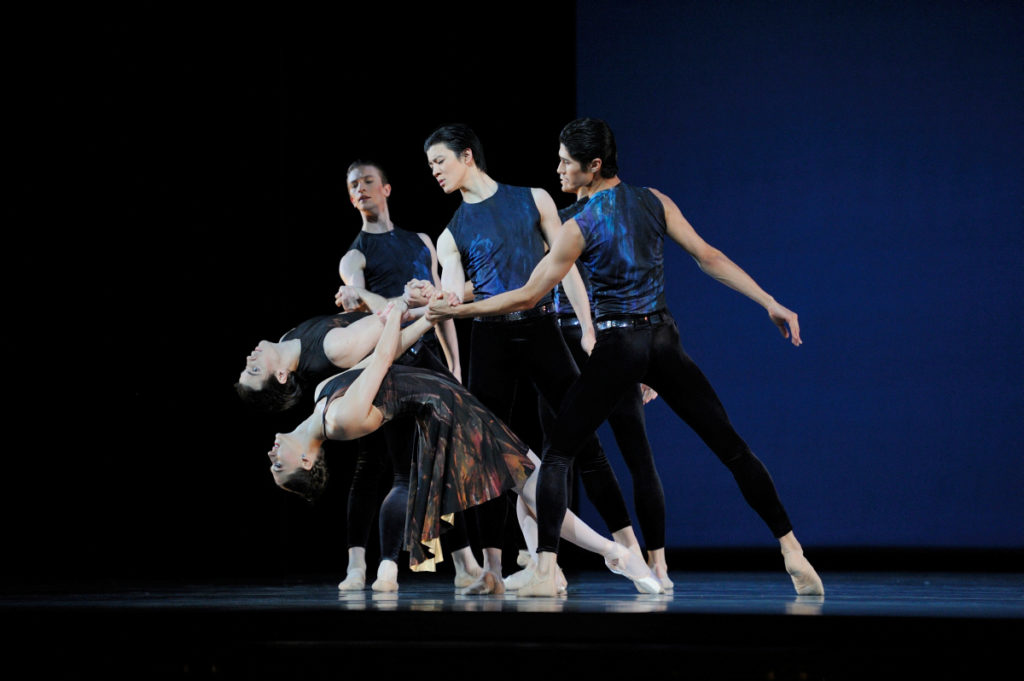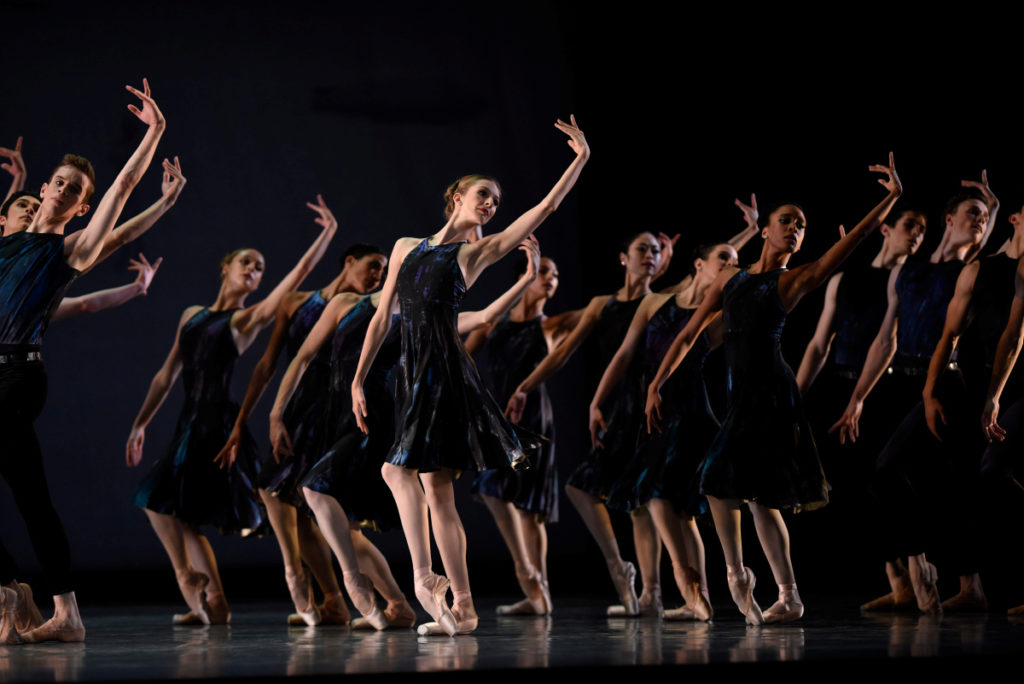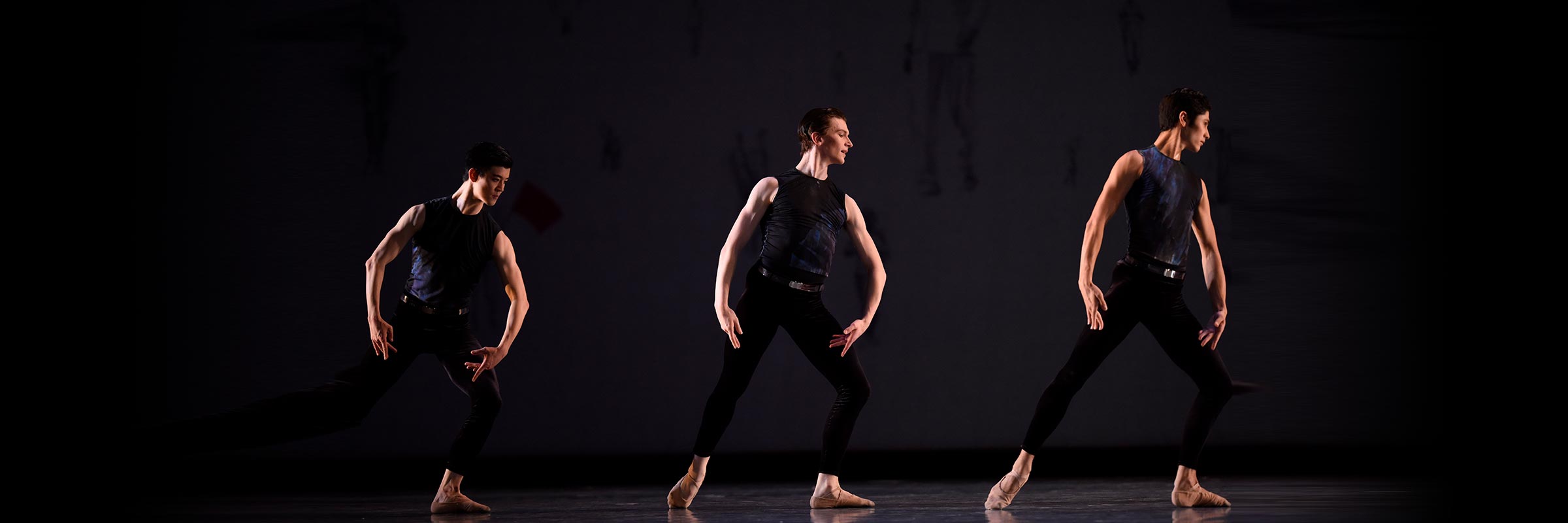About Ratmansky’s Symphony #9
An Homage to Shostakovich, Russia, and Hope
Often not particularly melodic, with rapid-fire shifts in tone and tempo, Dmitri Shostakovich’s music seems more suited for concert halls and film scores than for the ballet stage. But in the hands of choreographer Alexei Ratmansky, this music is danceable indeed. Certainly no other choreographer has shown as much dedication to Shostakovich as Ratmansky, who has set at least 11 ballets to the composer’s music. “Shostakovich is not nearly as familiar to most audiences as other composers,” says SF Ballet Artistic Director and Principal Choreographer Helgi Tomasson. “If anybody could do it, it would be Alexei.”
To appreciate any music, it’s best to grasp the context of the times in which the composer worked. That’s particularly true of Shostakovich. Coming of age in Stalinist Russia, he, like all artists, was under scrutiny. He gained celebrity at an early age, and political expectations followed in the form of requests for compositions that exalted the Soviet state. Often he rebelled, and several times he was denounced by the state; he walked a tightrope between survival and artistic choice. “Stalin was interested in music that celebrated everything that was great about Russia, and Shostakovich was at odds with that,” says Music Director and Principal Conductor Martin West. “He was trying to create music for all time, not just for Russia.”

Ratmansky, though, had Russia in mind when he created Shostakovich Trilogy—a co-production of San Francisco Ballet and American Ballet Theatre (ABT). “This is an homage to Shostakovich, because of Alexei’s enormous admiration for his talent and for what he symbolizes for Russian people,” says stager and ABT Director of Repertoire Nancy Raffa. “But it’s also an homage to [Ratmansky’s] heritage. He grew up listening to and loving Shostakovich, so this was like a gift [to the composer]. And a gift to Russia.”
Permeating these ballets are the most fundamental human emotions: love and euphoria, grief and despair, and deeply, pervasively, fear—of being watched or followed, or (we assume) disappeared, as so often happened to those in political disfavor during Shostakovich’s lifetime. In creating Symphony #9, the first ballet in Shostakovich Trilogy, Ratmansky considered “the time the piece was written and the emotions behind what was happening in Shostakovich’s life,” says Raffa. The first principal couple represents Shostakovich and his wife, supporting each other in a time of great danger; the other couple represents “the regime, the communist party, the whole Stalin mentality,” Raffa says. “He wanted them to be almost a caricature, expressing the sarcasm in parts of the score. But everything is abstract. He kept saying, ‘There’s no story, but there’s a lot of meaning.’”

West calls Shostakovich’s ninth symphony “so much fun—it goes by like the wind.” Fun and flashy it is, but it was also one of the composer’s acts of rebellion. West explains: “When the war was finished, it was agreed that he would write a Beethoven’s Ninth type of thing, to celebrate the beating of the Nazis. He started writing it and scrapped it.” What he wrote instead—this funny, acerbic symphony—was interpreted as thumbing his nose at Stalin. “He was in big trouble,” West says. “They were expecting something triumphal and this is just a bit of fun. [In places] it’s like he’s mocking Stalin. I don’t know if he was, but that’s the feeling you get.”
In Ratmansky’s hands, tension underlies the fun, giving the ballet an edge of fear. The subtext is clear: no one is safe. Raffa tells one couple, “You’re running away from something. The arm is like a window—look through it.” Yet the ballet is buoyed by hope, manifested by a solo principal man Ratmansky calls the Angel. “He’s symbolic of something beyond our tangible, physical world,” Raffa says. “He’s a guide. Despite the turmoil that somebody could live [through], there’s always a way through it. That dancer is symbolic of this.” She tells the Angel dance to “come out like you’re attacking all the evil. That means you can’t touch the ground. Come out like fire.”
There is always, Raffa says, the “guidance of your own integrity, your value system. Of hope, where there’s perhaps no hope; light where there’s only darkness.”
Symphony #9 was part of SF Ballet’s 2021 Digital Season. It was performed in Program 03, streamed March 04–24.
by Cheryl A. Ossola
Header Image: San Francisco Ballet in Ratmansky’s Symphony #9 // © Erik Tomasson








